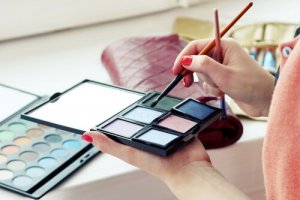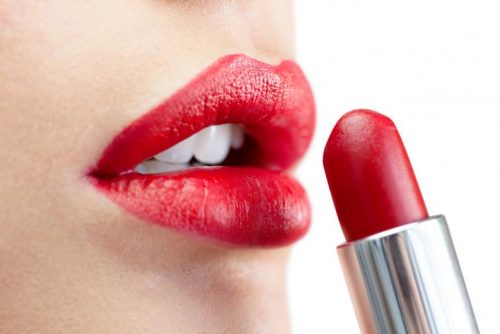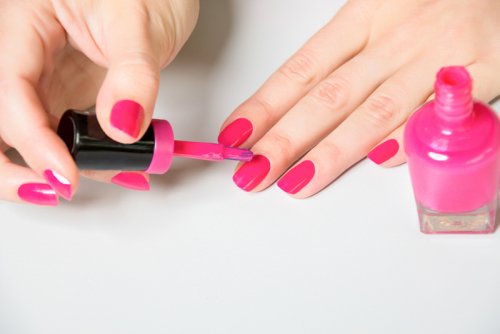Seven Toxic Ingredients to Avoid in Cosmetics


Reviewed and approved by the doctor Karla Henríquez
Most cosmetics are full of toxic ingredients, many of which have names that we can’t even pronounce. Today, discover which makeup to avoid based on the ingredients listed on its labels.
Toxic ingredients to avoid in cosmetics
You may have already had an allergic reaction due to cosmetics, except you didn’t know what it was. Perhaps it was the fact that they contained some of the following toxic ingredients:
1. Parabens
Parabens are usually present in deodorants, toothpaste, conditioners, shampoos, and in many other products.
Even though they’re not toxic in small quantities, cumulative exposure to these chemicals from the various products that you may use could overload your body and contribute to a wide range of health problems.
Furthermore, this type of preservative can cause an allergic reaction in the scalp or skin if you’re sensitive.
If the product you’re using contains methylparaben ethylparaben, Propylparaben, Butylparaben, or isobutylparaben, then it has parabens.
2. Lead

Did you know that many lipsticks contain lead? When we buy lipstick, we usually don’t look at what it was made with. Furthermore, we often use these products without knowing that many of them carry a toxic ingredient.
It’s true that the amount of lead they contain is very small. However, recent scientific research indicates there is no safe level of lead exposure. Lead is a neurotoxin and can be dangerous even in small doses. Medical experts are clear in that any level of lead exposure is unhealthy.
You may also like to read this article: How to Eliminate Heavy Metals from Your Body
3. Silicones
Another ingredient that you should avoid in cosmetics is silicones. Unfortunately, these are found in many makeup foundations. Even though they’re not as toxic as lead, they do have a negative effect on your skin.
Silicones smooth the skin, giving it a much healthier and more uniform appearance. However, at the same time that they provide this advantage, they also keep your skin from transpiring because they clog your pores.
4. Ammonia
Ammonia is widely used in hair coloring and bleaches, as it helps the dye to hold on to the hair. However, although over the years its composition was modified to be more respectful of your scalp, it still causes some issues.
Of all the chemicals that cosmetic companies use, ammonia stands out as one of the worst. Furthermore, as soon as it touches your skin or eyes it reacts with the moisture in them and turns into ammonia hydroxide. This, in turn, kills cells by damaging their membranes. This leads to inflammation, which causes even more damage.
This ingredient causes irritation on the scalp and/or hair loss. Also, it’s not at all recommended for people who suffer from certain types of eczema or seborrheic dermatitis.
5. Phthalates

This is another ingredient that you should avoid in cosmetics. Furthermore, this compound is present in nail lacquers and serves to set the polish to the nails. It can also be found in blush, bath oils, baby lotions, powders, and shampoos.
The problem with phthalates is that, like lead, our body absorbs them through the nails, in this case. Additionally, phthalates lead to alterations in the hormonal system.
In addition, researchers at the University of Rochester found a link between phthalate exposure and belly fat. Furthermore, they also found that insulin resistance increased with exposure. Therefore, there’s a higher risk of diabetes.
6. Formaldehyde
This component was classified as high risk. Moreover, many companies included it in their products. However, they eliminated it when the World Health Organization singled it out as a carcinogen.
Formaldehyde has been added to nail polish and styling gels and is dangerous at very low concentrations. The Environmental Protection Agency (EPA) says just one part in 10 million can cause watery eyes, burning sensation in eyes and throat, nausea and difficulty in breathing.
Nowadays, it’s rare to find this ingredient. However, keep it in mind, just in case.
7. Ethanolamine Compounds
DEA (diethanolamine), MEA (monoethanolamine), and TEA (triethanolamine) are chemical compounds added to soaps, shampoos, hair conditioners and dyes, lotions, shaving creams, paraffin and waxes, household cleaning products, pharmaceutical ointments, eyeliners, mascara, eye shadows, blush, make-up bases, foundations, fragrances, and sunscreens.
Not only are these ingredients carcinogenic, studies found that they affect reproductive health in men as they alter sperm structure. Additionally, they accumulate in the liver and kidneys, causing organ toxicity and also possible neurotoxic effects such as tremors.
Another study suggests that memory function and brain development in offspring could be permanently affected by a mother’s exposure to DEA.
In addition, the last three ingredients mentioned above all delay hair growth.
Like this article? We think you may also like to read: 9 Cosmetic Plants You Can Have in Your Garden and in Pots
Conclusion
What price are you willing to pay for your beauty products?
There are many more toxic ingredients to avoid in cosmetics. Unfortunately, most of us don’t usually look at the ingredients, and it could have serious repercussions to our health and the health of the little ones who can’t protect themselves yet.
Be careful and read the labels before buying.
All cited sources were thoroughly reviewed by our team to ensure their quality, reliability, currency, and validity. The bibliography of this article was considered reliable and of academic or scientific accuracy.
- Bocca, B., Pino, A., Alimonti, A., & Forte, G. (2014). Toxic metals contained in cosmetics: A status report. Regulatory Toxicology and Pharmacology. https://doi.org/10.1016/j.yrtph.2014.02.003
- Chiari, B. G., José de Almeida, M. G., Corrêa, M. A., & Isaac, V. L. B. (2012). Cosmetics Quality Control. In Latest Research into Quality Control. https://doi.org/10.5772/51846
- Saillenfait, A. M., & Laudet-Hesbert, A. (2005). Phthalates | Phtalates. EMC – Toxicologie-Pathologie. https://doi.org/10.1016/j.emctp.2004.10.003
This text is provided for informational purposes only and does not replace consultation with a professional. If in doubt, consult your specialist.








